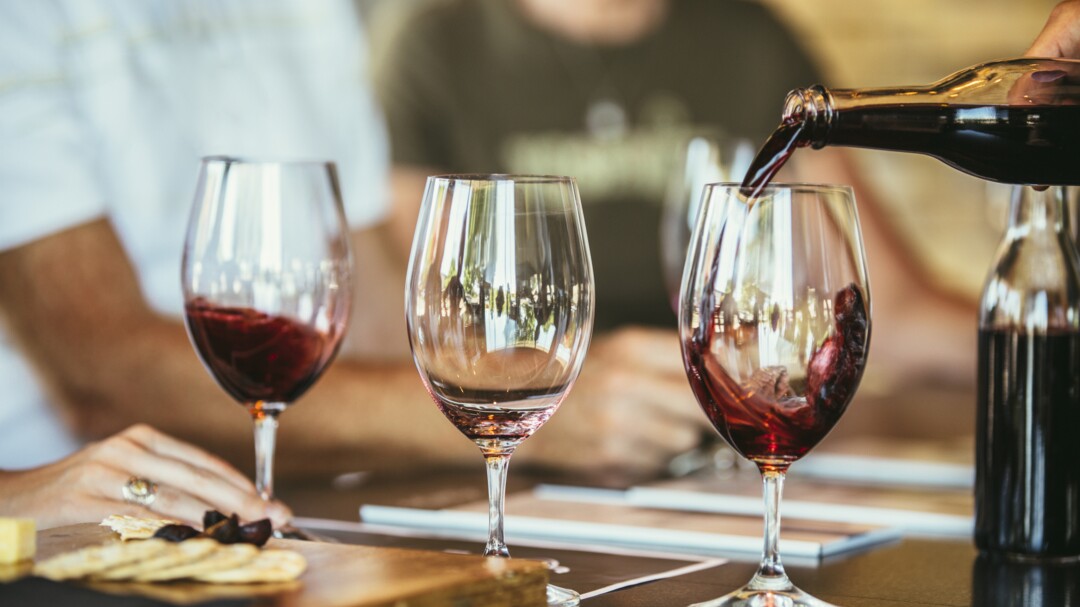
The artwork of wine tasting is simply the sensory examination and comparison of wine. Although the ideas and practice of wine tasting have been around for years since wine was created, the formal process of wine tasting was once only developed due to the fact of the 14th century. Today, people are employed as professional wine tasters (Yes, it truly is their ‘job’!) and use a specific vocabulary to describe the look, smell, and taste of a wine, as nicely as flavors, aromas, and other general traits of a wine vintage. However, there is a growing trend of the wine tasting birthday party that focuses less on formal processes and extra on general and personal grasp of a wine.
The Stages of Wine Tasting
There are four major ranges of wine tasting. These are:
- Appearance
- The smell of wine when “in the glass”
- The sensations the wine provides “in the mouth”
- The aftertaste that occurs, or the “finish”
All of the above stages are used in conjunction with every other to determine the excellent and properties of a wine. The properties that an expert wine taster is looking for are as follows:
- Character and complexity
- How much doable the wine has for aging or drinking
- Any possible faults the wine may have
Even with all of these properties, the professional taster will also base his/her opinion on the usage of research from where and how the wine used to be made. For example, a wine made in a winery from a certain wine area may have a unique taste from the same kind of wine made in a different region. For the wine being tasted, the wine taster must make certain that his/her opinions are not biased from other regions. For example, a wine taster tasting a cabernet sauvignon from a Accordini Igino Winery in one region must comprehend if there are differences in production (ie processes, developing conditions, soil conditions, etc) from another winery producing cabernet sauvignon in a different region (or even country). This way, the wine taster will be in a position to determine the quality of the wine being examined and know whether it is superb quality from that winery or precise region. Some regions will produce superior wines due to the fact of better growing stipulations and/or production processes, but that should not stop a taster from determining the first-rate of wine from a different region and understand if it is a good quality wine
Blind Tasting
Blind tasting is now not necessarily done through a person who is visually impaired. It is simply a technique that allows for complete impartiality when tasting wines to decide which one is the best. This is done in wine tasting by making sure the taster(s) have not seen the label of the bottle shape. One way of doing a blind style is to have the wine served from black glass, although this prevents the taster from seeing the appearance.
It is well recognized that a tester’s perception of wine can be severely influenced if he/she knows a wine’s details, such as color, price, popularity, or geographic region. Even scientific research has shown that the strength of perception will influence a person’s expectations. For example, many wine lovers will assume that the more luxurious wine is, the better it will taste over a much less expensive wine, or they may parent a French wine will taste better than an Australian wine virtually because “it’s French…enough said!”. As an example, a French researcher named Frederic Brochet was stated to have submitted a Bordeaux wine in two different bottles, where one had a label that stated it was a very expensive brand, whilst the other bottle was labeled as if it was once simply cheap desk wine. The tasters reported that the expensive one used to be “woody, complex and round” while the “cheap” one used to be described by tasters as “short, light and faulty”…yet they have been the same! Therefore, to get true thinking of the quality of a wine, a blind tasting is always the quality option.
Horizontal vs Vertical Tasting
Contrary to what some people may think, horizontal tasting does now not involve drinking wine whilst lying flat on your back (or collapsed on the floor). It is tasting wines that are all of the equal vintages but are from distinctive wineries in the same area. By doing keeping the identical vintage and type of wine, wine tasters are in a position to determine the differences in patterns of the different wineries. A vertical tasting is used to determine variations in different vintages. By tasting the same kind of wine produced by the same vineyard but with different vintages, variations between the vintages can be determined.
Wine tasting is more than just truly pouring a glass of Chardonnay and gulping it down. There is a whole process that entails more than just the use of your taste buds. It is a whole manner where skilled tasters can make a wine producer’s present-day vintage into the most popular wine of the year, or it can result in the winery losing hundreds of thousands due to a poorly perceived reputation. However, it is also a very enjoyable trip for people to host a wine tasting party as a way of discovering new wine they would possibly not have tried previously, as well as simply being a friendly and sociable gathering.
